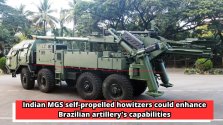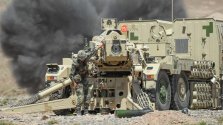The Turks have also made the Hurjet.
Yes but their first fighter is a heavyweight. Koreans built the T-50 first as well before converting that to the A-50 as their first fighter before tackling the KF-21 medium fighter. Turkey went to the KAAN after the trainer (and before the trainer had even matured unlike the T-50.)
It's far more affordable, and great powers don't normally provide options.
Note that rather promising F-20 from Northrop was killed by US themselves.
From design pow, larger design is easier for the aspiring manufacturer.
It wasn't. 1990s China is many things, but it wasn't a newbie aircraft designer and manufacturer.
Larger aircraft are more useful and holds more potential. I can't think of any reason why you would not always go with those if you are more ambitious.
Going with "lightest" of light fighters is like making it a goal to put the smallest lightest training wheels on a training bicycle.
Yes, it is harder to put on smaller, lighter training wheels than regular sized ones that would hold up when the training bike tips to the side. But it is still a very unambitious training bicycle.


